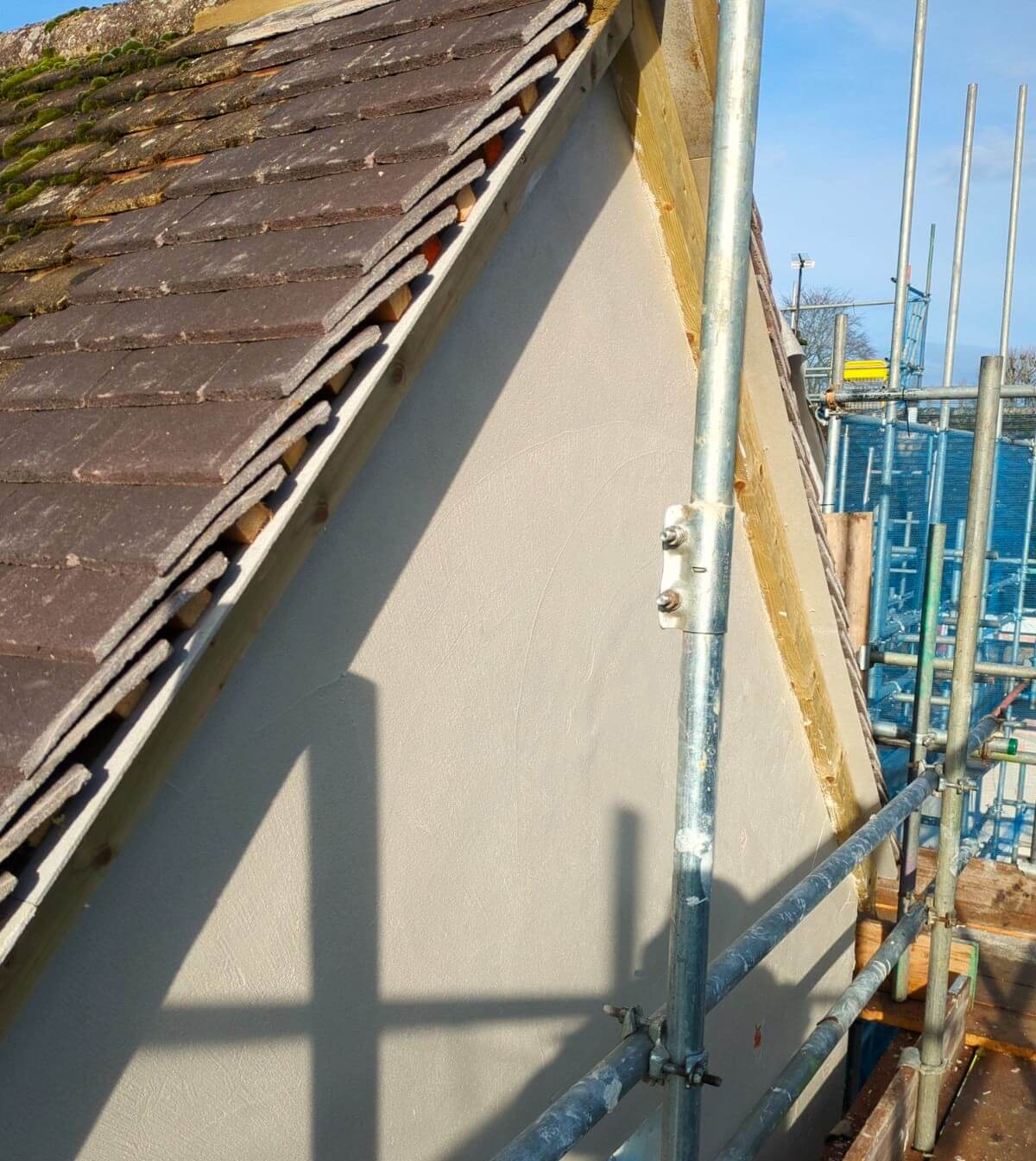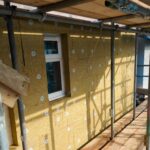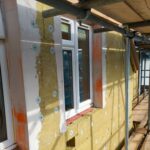In CWI, EEM, EWI, GFI, IWI, Retrofit by Robert Wheeler / 13 March 2024 / 0 comments

Retrofitting has become a critical aspect of sustainable building practices, offering opportunities to enhance energy efficiency, improve structural integrity, and prolong the lifespan of existing structures.
This blog post delves into the comprehensive process of retrofitting, from the initial assessment and planning stages to the execution of energy efficiency upgrades and structural enhancements. Exploring the financial considerations, permitting requirements, and successful case studies in retrofit projects, this article aims to provide a holistic understanding of what retrofitting entails and the emerging trends shaping the future of building renovation.
Introduction to Retrofitting
Retrofitting is like giving your building a glow-up. It involves upgrading and enhancing existing structures to make them more efficient, sustainable, and safe.
Definition of Retrofitting
Retrofitting is the process of making improvements or alterations to an existing building to prolong its life, increase its energy efficiency, and enhance its overall performance.
Importance of Retrofitting in Building Sustainability
Retrofitting plays a crucial role in promoting sustainability by reducing energy consumption, minimizing waste, and improving the overall environmental impact of buildings.
Assessment and Planning for Retrofit Projects
Before diving into a retrofit project, it’s essential to assess the building’s current state and plan accordingly to ensure a successful transformation.
Initial Building Evaluation
Conducting a thorough evaluation helps identify areas that require improvement, such as energy inefficiencies, structural weaknesses, or outdated systems.
Identifying Retrofit Opportunities
By pinpointing specific areas for enhancement, you can prioritize upgrades that will have the most significant impact on the building’s performance and sustainability.
Energy Efficiency Upgrades in Retrofitting
Enhancing a building’s energy efficiency is a key focus of retrofit projects, leading to reduced utility costs and a smaller environmental footprint.
Upgrading Insulation and Windows
Improving insulation and installing energy-efficient windows can help maintain a comfortable indoor temperature while reducing heating and cooling expenses.
Implementing High-Efficiency Heating and Cooling Systems
Upgrading to high-efficiency heating, ventilation, and air conditioning (HVAC) systems can significantly decrease energy consumption and enhance indoor air quality.
Structural and Mechanical Systems Upgrades
Addressing structural and mechanical issues is vital in ensuring the safety, functionality, and longevity of a building through retrofitting.
Upgrading Electrical Systems
Modernizing electrical systems not only improves safety but also enhances energy efficiency and accommodates the demands of contemporary technology.
Addressing Structural Integrity Issues
Identifying and resolving structural weaknesses or integrity concerns is crucial in retrofitting to ensure the building can withstand environmental factors and meet safety standards.
Financial Considerations for Retrofit Projects
So, you’ve decided it’s time to give your space a makeover – the retrofit kind. But before you break out the sledgehammer, let’s talk money. Budgeting for retrofit projects requires careful consideration of costs vs. benefits. You want to make sure you’re not just throwing cash into a black hole (unless you’re into that kind of interior design).
When it comes to financing options for retrofitting, you’ve got choices. From traditional loans to energy efficiency grants, there are ways to fund your project without resorting to robbing a bank. Well, unless your retrofit involves turning your space into a replica of the Bank of England – then maybe.
Permitting and Compliance in Retrofitting
Ah, regulations. The bureaucratic red tape that stands between you and your dream retrofit. Navigating building codes and regulations can make your head spin faster than a ceiling fan on high. But fear not, with a bit of patience and maybe a soothing cup of tea, you can figure out what you need to do to stay on the right side of the law.
Obtaining necessary permits for retrofit projects is like getting a permission slip signed by the principal – it’s necessary, but can feel like a hassle. Remember, compliance is key if you don’t want your retrofit to turn into a legal nightmare. Plus, you don’t want your space to end up looking like a reality TV renovation gone wrong.
Case Studies: Successful Retrofit Projects
Who doesn’t love a good success story? When it comes to commercial building retrofit success stories, there are plenty of shining examples to inspire your own project. From transforming energy hogs into efficient superstars to giving outdated spaces a modern facelift, these case studies show that retrofits are more than just a fad.
Residential retrofitting examples are like the makeover montages in home improvement shows – except these are real and don’t involve dramatic reveals with over-the-top reactions. Whether it’s transforming a cozy cottage into an energy-efficient haven or giving an urban apartment a sustainable upgrade, these examples prove that retrofits can be both practical and stylish.
Future Trends in Retrofitting
The future is bright for retrofitting, with emerging technologies paving the way for more innovative projects. From smart home solutions to advanced building materials, the possibilities are as endless as your Pinterest board of dream renovations.
Integration of renewable energy in retrofit projects is like adding a cherry on top of your sustainability sundae. With solar panels, wind turbines, and other green technologies becoming more accessible, retrofitting can help transform your space into an eco-friendly oasis. Who knew being green could be so trendy?
Conclusion
In conclusion, retrofitting presents a valuable pathway towards creating more sustainable and resilient buildings for the future. By integrating energy-efficient technologies, upgrading mechanical systems, and ensuring compliance with regulations, retrofit projects can significantly reduce environmental impact and enhance the overall functionality of existing structures. As the industry continues to evolve and innovate, embracing the principles of retrofitting will play a crucial role in driving towards a more sustainable built environment for generations to come.
FAQs on Retrofitting
Retrofitting is the process of upgrading and improving existing buildings to make them more efficient, sustainable, and safe. This can involve various improvements, such as:
Energy efficiency upgrades: Installing better insulation, windows, and HVAC systems to reduce energy consumption and costs.
Structural and mechanical upgrades: Modernizing electrical systems, addressing structural weaknesses, and ensuring building safety.
Retrofitting plays a crucial role in achieving sustainability by:
Reducing energy consumption and greenhouse gas emissions.
Minimizing waste by extending the lifespan of existing buildings instead of demolishing and rebuilding.
Creating healthier and more comfortable indoor environments.
Assessment and Planning: Conduct a thorough evaluation of the building to identify areas for improvement and plan the project accordingly.
Energy Efficiency Upgrades: Implement measures like insulation improvements, efficient windows, and upgraded HVAC systems to reduce energy usage.
Structural and Mechanical Upgrades: Address any structural weaknesses, modernize electrical systems, and upgrade mechanical equipment for safety and functionality.
Financial Considerations: Explore financing options like loans and grants to cover the project costs.
Permitting and Compliance: Obtain necessary permits and ensure compliance with building codes and regulations.
The future of retrofitting is exciting, with innovative trends including:
Integration of renewable energy: Utilizing solar panels, wind turbines, and other green technologies to generate clean energy for the building.
Smart home technologies: Implementing smart systems for efficient lighting, HVAC control, and improved building management.
Advanced building materials: Utilizing innovative materials with improved energy efficiency, durability, and sustainability properties.
By understanding the benefits and process of retrofitting, we can contribute to creating a more sustainable and resilient built environment for the future.
Ready to discuss your regeneration project and how NXTGEN Futures Ltd can elevate it with expert retrofit? Contact us today!
Latest Retrofit Posts
- What a retrofit-first approach offers the UKRetrofitting is like giving your home a makeover to make it more energy-efficient, comfortable, and healthy. The retrofit-first approach prioritizes upgrading existing buildings over new construction to tackle climate change and improve living conditions. Definition of Retrofitting Retrofitting involves making… Read more: What a retrofit-first approach offers the UK
- What is internal wall insulation?Internal wall insulation is a crucial component of creating a comfortable and energy-efficient living space. By insulating the walls within a building, homeowners can experience benefits such as improved thermal performance, reduced energy bills, and enhanced acoustic comfort. Understanding the… Read more: What is internal wall insulation?
- What is a retrofit assessor?Retrofit assessors play a crucial role in the sustainability and energy efficiency of buildings by evaluating and identifying opportunities for improvement. This blog post aims to provide an in-depth understanding of the responsibilities, qualifications, and benefits associated with being a… Read more: What is a retrofit assessor?
- What is a retrofit assessment in the UK?Retrofit assessments play a crucial role in the sustainable development of buildings in the UK, helping to improve energy efficiency, reduce carbon emissions, and enhance overall building performance. By evaluating existing structures and identifying opportunities for upgrades and enhancements, retrofit… Read more: What is a retrofit assessment in the UK?
- Retrofit and Energy Efficiency in Historic BuildingsHistoric buildings are not only architectural treasures but also valuable cultural assets that contribute to our sense of history and identity. However, many of these buildings often suffer from poor energy efficiency, leading to excessive energy consumption and high operating… Read more: Retrofit and Energy Efficiency in Historic Buildings
- What is retrofitting in construction?Retrofitting in construction is a crucial process that involves upgrading existing buildings or structures to meet modern standards of safety, energy efficiency, and functionality. This blog post explores the concept of retrofitting, its importance, various techniques used in the industry,… Read more: What is retrofitting in construction?
- CASE STUDY: Curtis WayDelivering a Holistic Retrofit Solution with EWI & Solar Energy Project Overview NXTGEN Futures Ltd. successfully completed a large-scale retrofit project on Curtis Way, Berkhamsted, England, UK. This case study showcases our expertise in External Wall Insulation (EWI), retrofit coordination,… Read more: CASE STUDY: Curtis Way
- What happens to a building during retrofitting?Building retrofitting is a vital process that involves making significant modifications and improvements to existing structures to enhance their efficiency, functionality, and sustainability. In this blog post, we will delve into the intricate workings of building retrofitting, exploring the various… Read more: What happens to a building during retrofitting?
- UK Government Retrofit Scheme: Making Energy Efficiency Cool AgainIntroduction to the UK Government Retrofit Scheme Background of the Retrofit Scheme Picture this: you’re sitting at home, snuggled up in your favourite blanket, enjoying a cup of tea, when suddenly you feel a draft. Not cool, right? Well, that’s… Read more: UK Government Retrofit Scheme: Making Energy Efficiency Cool Again
- What are Retrofit Trickle Vents?Improving indoor air quality and enhancing energy efficiency are key priorities for many homeowners. In this article, we will explore the concept of retrofit trickle vents and their role in achieving these goals. Trickle vents are small, adjustable openings integrated… Read more: What are Retrofit Trickle Vents?
- Retrofit Underfloor HeatingRetrofit underfloor heating has gained significant popularity as a cost-effective and efficient solution for enhancing the comfort and energy efficiency of existing buildings. Unlike traditional radiator systems, underfloor heating distributes warmth evenly across the floor, providing a comfortable and cozy… Read more: Retrofit Underfloor Heating
- Retrofit LondonRetrofitting has emerged as a crucial solution in transforming the landscape of cities, and London is no exception. As a global hub of culture, commerce, and innovation, London faces the pressing challenge of reducing its carbon footprint while ensuring sustainable… Read more: Retrofit London












